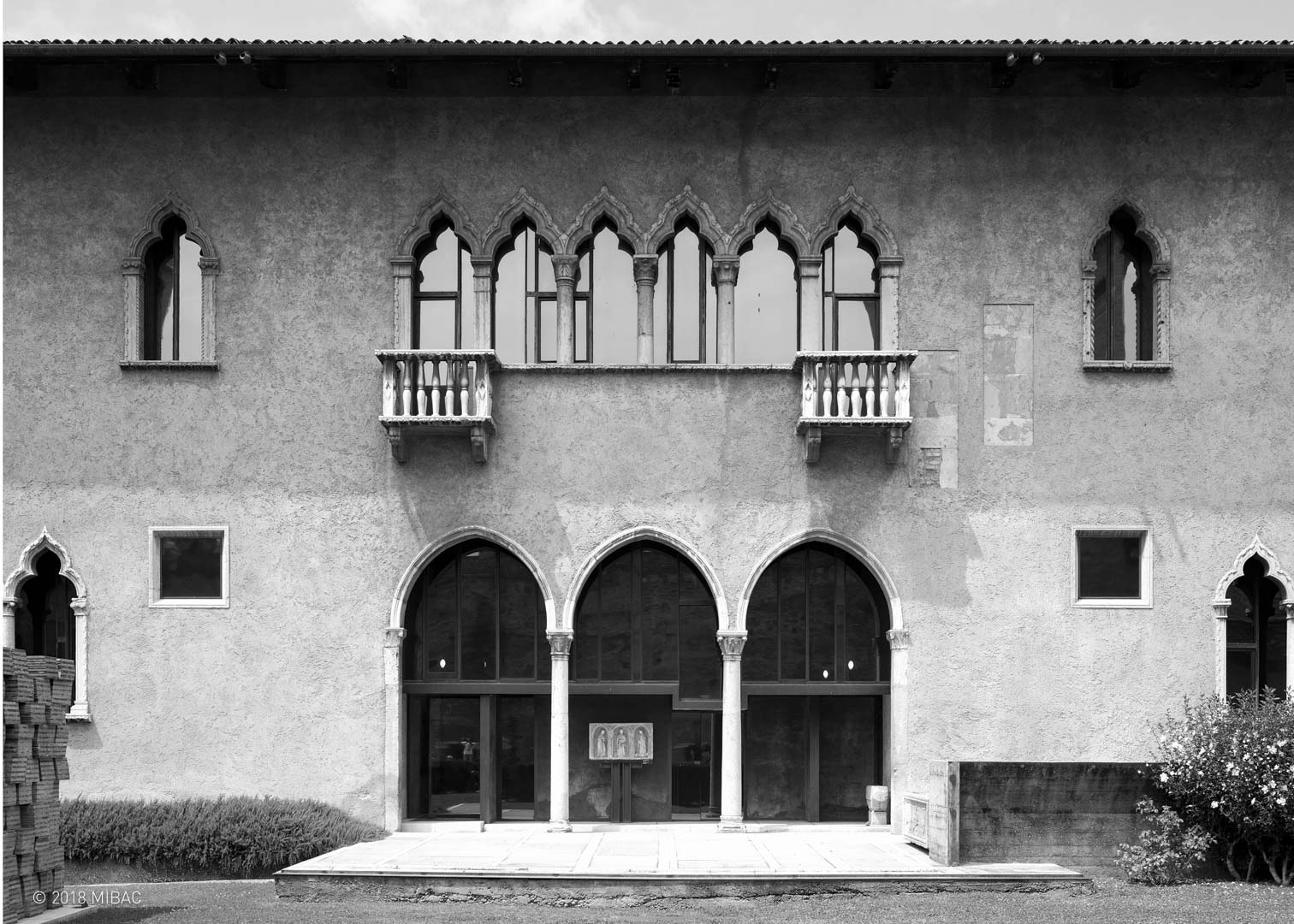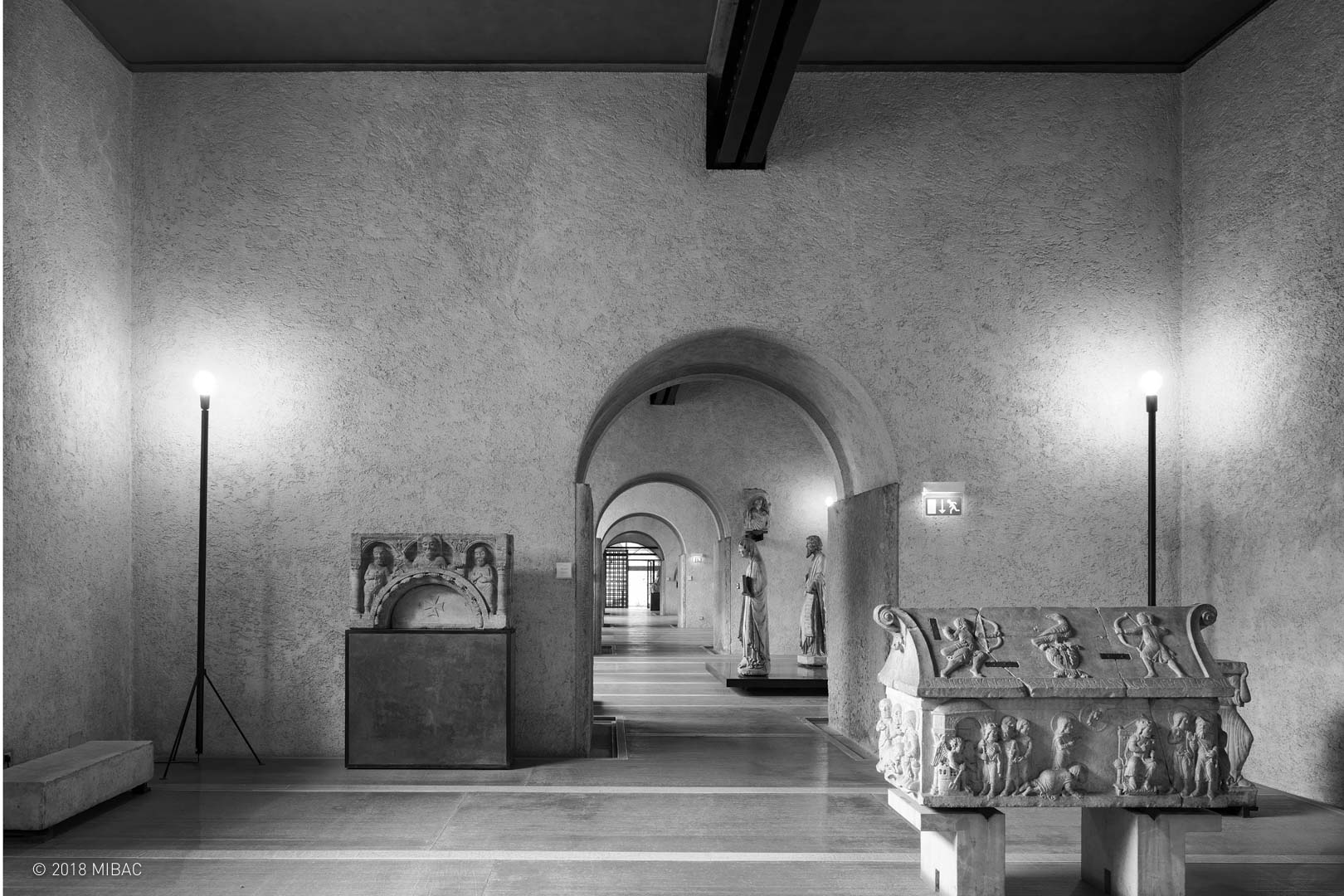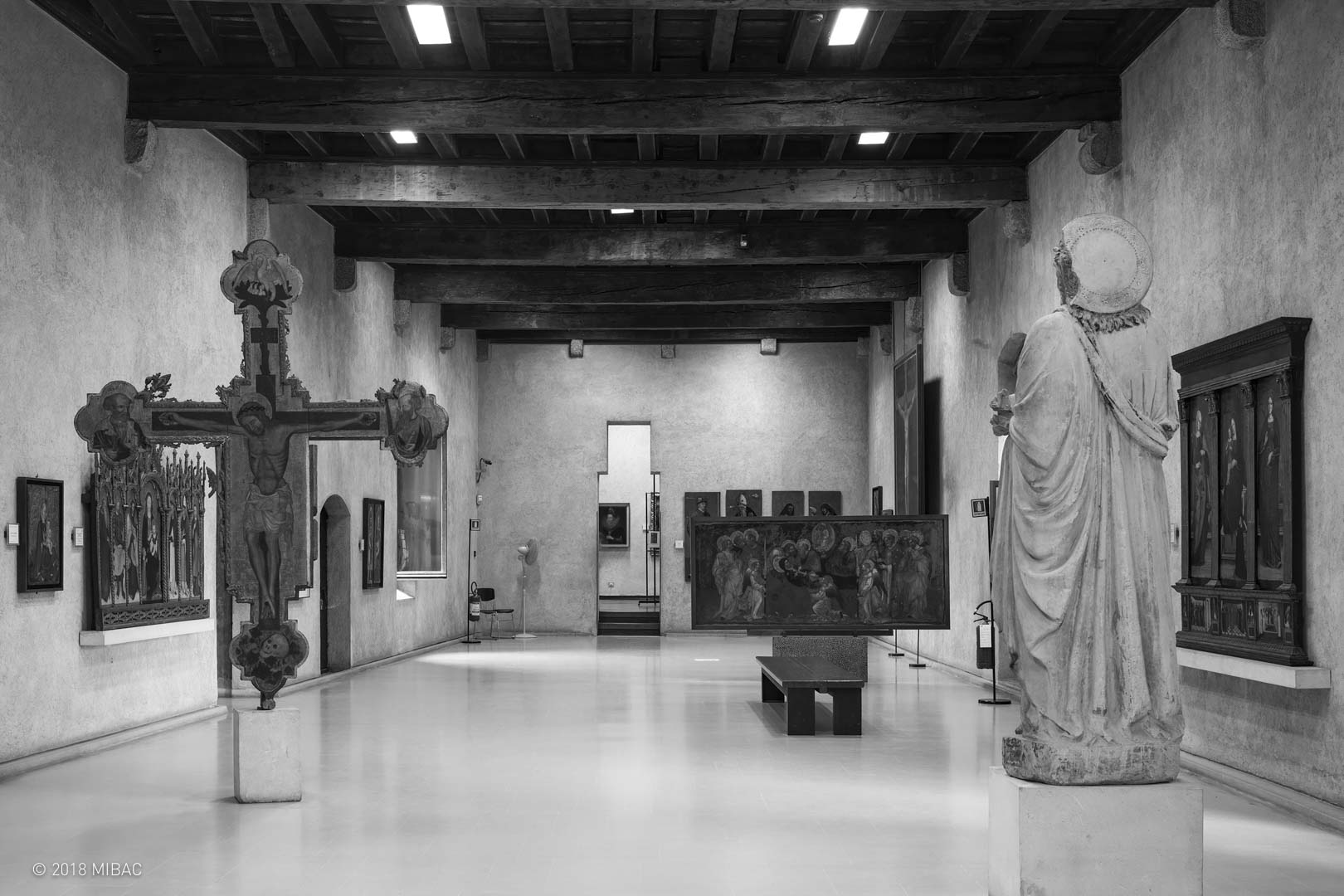Place: Verona, corso Castelvecchio, 2
Author: Carlo Scarpa
Chronology: 1956 | 1975
Itinerary: Treasure hunt
Use: Museum

In 1956, when Carlo Scarpa was responsible for the restoration of the Castelvecchio museum, the medieval castle had already been heavily remodeled: in the Napoleonic age a fort was built along the northern and eastern sides, and in 1924, the castle underwent some restoration work aimed at its conversion into a museum. Scarpa’s design uses cuts and caesuras to highlight the stratification and articulation into distinct nuclei, belonging to different periods, the medieval Reggia and the nineteenth-century Gallery. The latter’s façade, with its central loggia, defines the main interior front of the courtyard, where Scarpa placed the museum entrance in an asymmetric position.

The composition by nuclei is also underlined by placing paths, stairs, and suspended corridors to reconnect structures belonging to different periods. They are made with modern materials and are thus recognizable as belonging to the layer added by Scarpa. Among these, in the vacuum created by demolishing the last span of the nineteenth-century gallery, a system of metal walkways was built to connect it with the Reggia. They surround the equestrian statue of Cangrande, which stands on a concrete base.

The sculpture gallery, located on the ground floor of the nineteenth century section, is defined by a series of seven large rooms connected by vaulted passages and illuminated by Gothic bifore and gabled windows that define the main front. The elements delimiting the space are characterized by different materials: a long iron beam on the ceiling; plaster on the walls; cemented concrete edged with Prun stone strips on the floor, and pink Prun stone slabs covering the arched passageways’ walls.


Works from the 12th to the 15th century are exhibited in the sculpture gallery. For each of them, Scarpa identifies the right location and designs the appropriate support for display. He chose to place the sculptural group of the Crucifixion of the Tomb, in the last room on the ground floor, as a conclusion of the gallery perspective.


The Pinacoteca (Art gallery), located on the first floor of the Gallery and the Reggia, displays works from the Venetian Middle Ages of the 13th to the 16th century. Scarpa enhances them by placing them on simple bases and tufa cubes.

Scarpa designed thin “cassette” frames, to enhance the quality of the paintings.

The disjunction between the staircase and the wall is a hallmark of Scarpa’s poetics. The cladding is cut corresponding to three steps of the staircase below.

